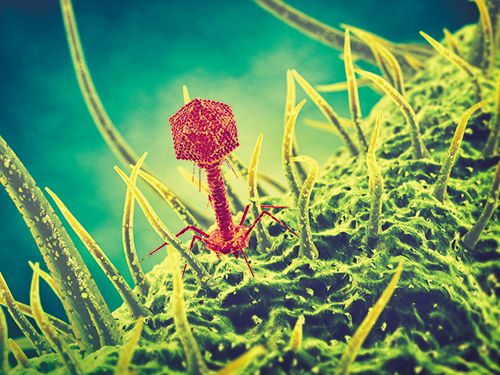Nanomechanical Resonators Expand the Reach of MS
A team of French researchers have demonstrated a new mass spectrometry technology based on nanomechanical resonators that is capable of measuring the mass of particles mega- to giga-dalton range.
Photo Credit: nobeastsofierce / stock.adobe.com

A team of French researchers have demonstrated a new mass spectrometry technology based on nanomechanical resonators that is capable of measuring the mass of particles mega- to giga-dalton range.
Current technologies for mass measurement can weigh several tons down to a hydrogen atom mass, roughly one atomic mass unit, or dalton (Da). However, a gap exists in-between these extremes in which existing commercial technology were incapable of measuring accurately. The megadalton (MDa) to gigadalton (GDa) range, or nanoscale range, contains many scientifically interesting entities including most viruses, a diverse range of disease biomarkers, as well as synthetic nanoparticles for nanomedicine.
“In the mass range we are targeting, particles weigh the equivalent of 1 million to 1 billion hydrogen atoms. It is an intriguing range where some particles, just like objects of everyday life, are constituted of an unspecific number of atoms, while others are known to contain specific numbers of atoms of defined masses: like small molecules, they have a defined molecular mass,” said Sebastien Hentz, Director of Research at CEA-Leti. “This is the case, for example, of the bacteriophage T5 virus capsid we have analyzed. To our knowledge, this is the highest molecular mass ever determined by mass spectrometry.”
Conventional mass spectrometers have contributed to countless studies and brought forth new knowledge at an amazing pace and scale. Nonetheless, they struggle to analyze species above the MDa range, because they require ionization to manipulate particles, and this becomes particularly difficult for “heavy” particles (1). This new system instead relies on nanomechanical resonators that use a specific tone or frequency to measure the change in frequency which occurs when a particle lands on the surface of the resonator. The mass of the landed particle can then be inferred from this frequency change.
This is not the first time nanomechanical mass spectrometers have been attempted, however, previous iterations mimicked conventional system and used electromagnetic processes to transport ionized analytes to the resonator. The result was sample loss and incredibly long analysis times with a single analysis possibly taking weeks. To circumvent this the team based out of Grenoble, France, used a surface acoustic wave device to nebulize nanoparticles in solution into a mist of small droplets which are then aspirated into a vacuum system. The particles are then transported towards the nanomechanical detector using a flow of carrier gas to focus this down into a narrow beam. As the beam is still quite large an array of nanomechanical resonators are used to detect the mass of as many incoming particles as possible.
The new technology has been dubbed “neutral mass spectrometry” and could offer researchers around the world a new tool in their chosen pursuits.
Reference
- S. Dominguez-Medina et al., Science 362(6417), 918–922 (2018).

Polysorbate Quantification and Degradation Analysis via LC and Charged Aerosol Detection
April 9th 2025Scientists from ThermoFisher Scientific published a review article in the Journal of Chromatography A that provided an overview of HPLC analysis using charged aerosol detection can help with polysorbate quantification.
Analyzing Vitamin K1 Levels in Vegetables Eaten by Warfarin Patients Using HPLC UV–vis
April 9th 2025Research conducted by the Universitas Padjadjaran (Sumedang, Indonesia) focused on the measurement of vitamin K1 in various vegetables (specifically lettuce, cabbage, napa cabbage, and spinach) that were ingested by patients using warfarin. High performance liquid chromatography (HPLC) equipped with an ultraviolet detector set at 245 nm was used as the analytical technique.
Removing Double-Stranded RNA Impurities Using Chromatography
April 8th 2025Researchers from Agency for Science, Technology and Research in Singapore recently published a review article exploring how chromatography can be used to remove double-stranded RNA impurities during mRNA therapeutics production.










